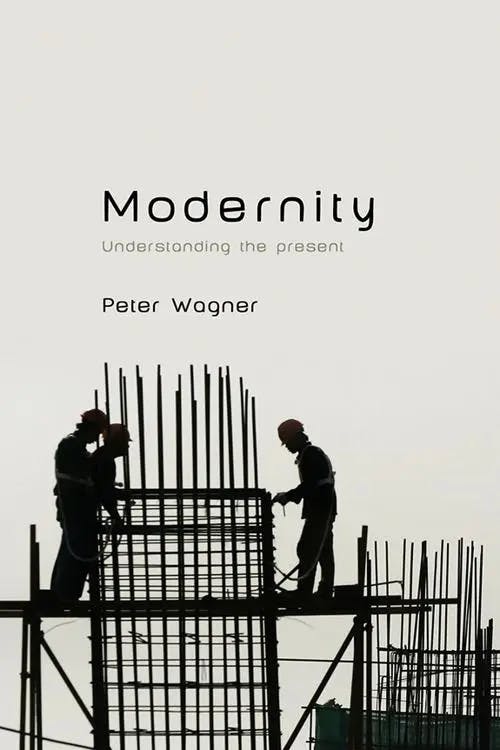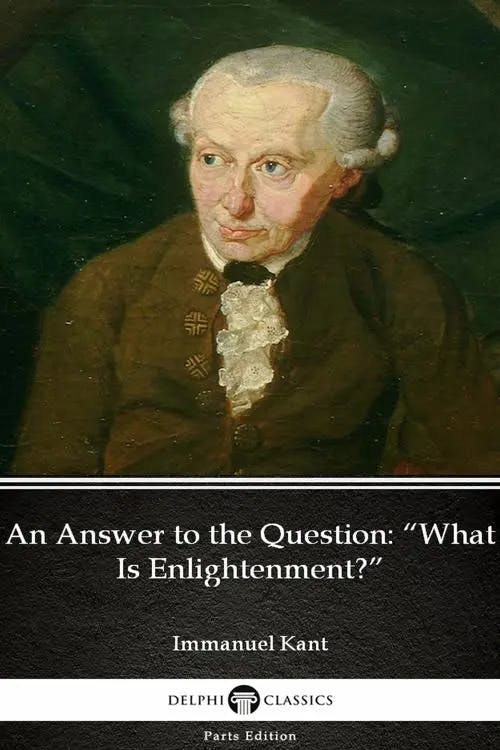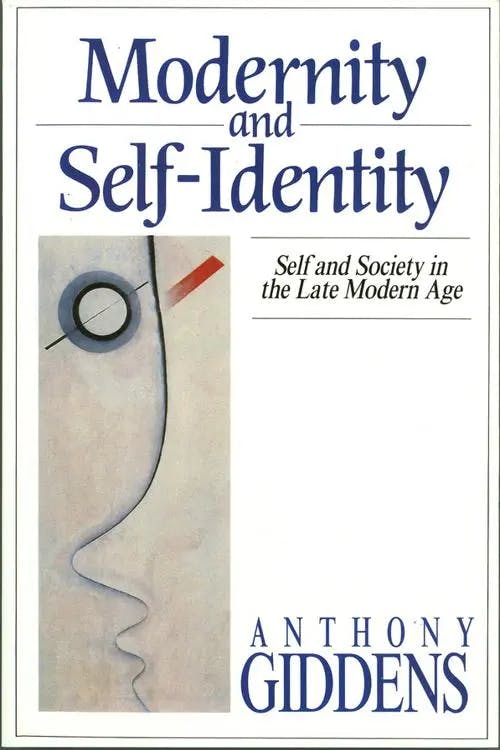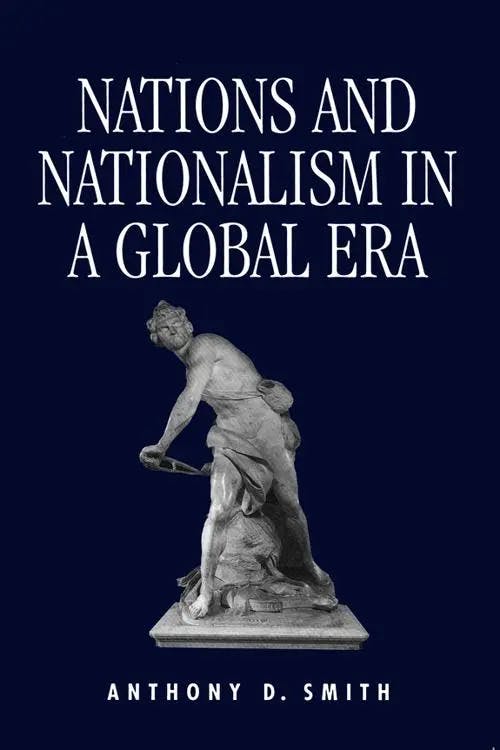What is Modernity?
PhD, English Literature (Lancaster University)
Date Published: 12.03.2023,
Last Updated: 30.01.2024
Share this article
Defining Modernity
In broad terms, modernity refers to a historic period (c.1650-1950) that defined itself in relation to progress. This progress was “evidenced” by scientific discoveries, industrialisation and technological innovation, which presented previous epochs as uncivilised and obsolete by comparison. In addition to advancements in science and technology which emerged in the seventeenth century onwards, modernity also refers to a set of philosophical and ideological beliefs centred around individualism and freedom of thought. As Peter Wagner defines it in his book Modernity: Understanding the Present,
Modernity is the belief in the freedom of the human being – natural and inalienable, as many philosophers presumed – and in the human capacity to reason, combined with the intelligibility of the world, that is, its amenability to human reason. In a first step towards concreteness, this basic commitment translates into the principles of individual and collective self-determination and in the expectation of ever-increasing mastery of nature and ever more reasonable interaction between human beings. The Declaration of the Rights of Man and of the Citizen (1793), as well as the granting of commercial freedom, can be understood as an application of these underlying principles of modernity, as can the technical transformations captured by the term ‘industrial revolution'. (2013)
Peter Wagner
Modernity is the belief in the freedom of the human being – natural and inalienable, as many philosophers presumed – and in the human capacity to reason, combined with the intelligibility of the world, that is, its amenability to human reason. In a first step towards concreteness, this basic commitment translates into the principles of individual and collective self-determination and in the expectation of ever-increasing mastery of nature and ever more reasonable interaction between human beings. The Declaration of the Rights of Man and of the Citizen (1793), as well as the granting of commercial freedom, can be understood as an application of these underlying principles of modernity, as can the technical transformations captured by the term ‘industrial revolution'. (2013)
As we can see here, modernity is quite a broad term. It captures progress from scientific endeavours and industry to more abstract examples of progression towards individual enlightenment and reason.
In Understanding Postmodernism (2017), Stewart E. Kelly and James K. Dew Jr identify five core beliefs of modernism as follows:
- ‘Modernist thought had a high level of confidence in human reason and in the human ability to know reality with certainty.
- Many central Enlightenment thinkers were committed to the widespread progress they thought science made possible.
- Numerous Enlightenment figures such as John Locke rejected the idea of original sin (the idea that Adam’s sin results in all humans being born with a sinful nature) and argued that it conflicted with human reason. Enlightenment thinkers believed humans were capable of morality with the right guidance.
- European culture was seen as the ‘pinnacle of modern civilization’ and ‘saw themselves as rational, educated, cultured, decent, and scientifically advanced’.
- ‘Many Enlightenment figures either rejected or radically modified traditional Christianity’ on the grounds of it being ‘for the morally weak (Nietzche)… the psychologically unhealthy (Freud), was a tool of oppression (Marx), or was scientifically unsupported (Darwin)’.
Phases of Modernity
The period of modernity is quite broad, however, it can be divided into three distinct phases: early modernity and the Enlightenment, (classical) modernity and late modernity. It is worth noting that these dates may differ from alternative readings and these phases are categorised in numerous ways across historical and philosophical scholarship. The exact period itself is debated and some scholars, as this guide goes on to discuss, believe modernity is a process, one we are still part of.
1.) Early modernity (c. 1500 -1789)
As Brian Trainor argues, the modern period began with a ‘radical rupture with medievalism’ (1998, 133). The early modern period saw ‘the rise of urban commercial classes, religious revival and reform, rural unrest and rebellion, and the decline of nomads’ (Jerry H. Bentley, 2007, 19). Within this period, a movement known as The Enlightenment cemented the values of modernity.
The Enlightenment
The Enlightenment, also known as the Age of Reason, was a philosophical movement of the seventeenth and eighteenth centuries in Europe. It is a distinct component of the early modernity era. The Enlightenment marked a movement away from religion in favour of science and reductionism; it challenged the established order and, as such, was seen as a threat to the rulings of the church and the monarchy. The core principles of the Enlightenment were progress, rationality, tolerance and a search for knowledge. The key figures in this period include René Descartes, Jean-Jacques Rousseau, Immanuel Kant, John Locke, Baruch Spinoza and Voltaire.
The work of French philosopher, René Descartes, was the foundation upon which the Enlightenment was based. In his work, Discourse on Method (1637), Descartes provided a moral code which all should seek to live by. Here, he outlines four maxims:
- Obey laws and customs of both country and religion
- Be decisive – make decisions and stick to them.
- Change your desires rather than attempting to change the world.
- Devote your life to discovering truth and knowledge.
(2015 [1637])
Descartes’ first maxim appears contradictory to Enlightenment values which suggested that humans should abide by their own moral compass rather than passively following the guidance of religious figures. Descartes, however, further elaborates upon this maxim arguing that he seeks the guidance of ‘the most judicious’ in order to examine his own opinions (Descartes, 2015 [1637]).
The Enlightenment was, in part, a reaction to religious conflict in the previous century in Europe such as the Thirty Years’ War (1618- 48). Such events resulted in the church’s dogmatic teachings being met with healthy curiosity and scepticism. Enlightenment thinkers believed that continuing as before would lead inevitably to further religious intolerance and violence. As such, we can see in this period the beginnings of deism (a belief in God, but rejection of religious figures being a source of divine revelation) and atheism. In The Treatise of Tolerance (1763), Enlightenment thinker and deist, Voltaire, wrote of the need for religious tolerance in order to create a peaceful nation.
Freedom to speak and think as one chooses was central to Enlightenment philosophy as Immanuel Kant argues in his essay ‘An Answer to the Question: “What Is Enlightenment?”’ (1784). Here, he argues that ‘Enlightenment is man’s release from his self-incurred tutelage’ (2017 [1784]). This tutelage he explains as such:
Tutelage is man’s inability to make use of his understanding without direction from another. Self-incurred is this tutelage when its cause lies not in lack of reason but in lack of resolution and courage to use it without direction from another. Sapere aude! “Have courage to use your own reason!” – that is the motto of enlightenment. (2017 [1784])
Immanuel Kant
Tutelage is man’s inability to make use of his understanding without direction from another. Self-incurred is this tutelage when its cause lies not in lack of reason but in lack of resolution and courage to use it without direction from another. Sapere aude! “Have courage to use your own reason!” – that is the motto of enlightenment. (2017 [1784])
The Enlightenment promoted autonomy and the ability to think for oneself, rather than being directed by a monarch or the church. The truly enlightened person is able to, according to Kant and his contemporaries, use their reason, make their own judgments and morally guide themselves.
Despite the ideals of modernity continuing into the nineteenth century, the Enlightenment itself was not subscribed to by many. As Roy Porter states in The Enlightenment,
The ‘Age of Reason’ found few friends in the nineteenth century. Romantics judged it soulless, conservatives thought it too radical, while radicals in turn were distressed to find its leaders, notably Voltaire, were at bottom worldly elitists, salon talkers rather than revolutionary activists. Only in the twentieth century, when the true complexities of the relations between ideology and action have forced themselves upon us, have the subtle ironies of the Enlightenment come to be appreciated. (2019)
2.) Classical modernity/modernity (1789-1914)
Jean Baudrillard in ‘Modernity’ (1987) delineates how modernity in the Age of Reason transformed in the nineteenth and twentieth centuries, thereby ushering in the second phase of modernity (known as either classical modernity or, simply, modernity). In the seventeenth and eighteenth centuries, Baudrillard argues:
The philosophical and political fundamentals of modernity are set in place : individualistic and modern rationalist thought, of which Descartes and the philosophy of the Enlightenment are representative…Culturally, it is the period of the total secularization of the arts and of the sciences… Modernity is not yet a way of life (the term does not then exist). But it has become an idea (linked to that of progress). It has taken on a liberal bourgeois tonality which will continue to mark it ideologically. (1987)
The ideas set out in this period begin to manifest with the rise of industrialisation in the nineteenth century. Progress in this era, therefore, takes on an entirely new meaning and is concentrated around industrialisation, urbanisation and the associated class conflict. Modernity becomes more rooted in the lives of the people rather than an abstract school of thought. Baudrillard goes on to demonstrate the key facets of modernity in this period as:
Urban concentration, and the gigantic development of the means of communication and information, will mark modernity, in decisive fashion, as a social practice and way of life articulated on change and innovation. (1987)
Karl Marx
One of classical modernity’s key figures is Karl Marx, a German philosopher who critiqued the political economy under capitalism. In his chapter ‘Karl Marx’, Robert Antonio writes that ‘Marx is arguably the first of a group of mostly later nineteenth- and early twentieth-century theorists who called for an empirical social science, and who theorized about the rise of modernity and the erosion of traditional Societies’ (2011 ,116). Antonio goes on to state that:
The most decisive context for Marx’s future work was the Second Industrial Revolution, or the rise of mechanized production, large firms, mass labor unions, the interventionist state, modern urbanism, and the world market. Although these changes were barely getting under way in the late 1840s, he already detected an emergent profound alteration of everyday life caused by “large-scale capitalism,” which he inscribed later under the sign of “modern industry.” Marx was the first modern social theorist to address social change so radical and so extensive that it overturned nearly all accustomed modes of experience, identity, association, and organization. (2011)
The progress envisioned in the early stages of modernity transforms by Marx’s era and manifests as capitalism. The industrial and technological innovations which were seen as key to human endeavour were being amplified, leading to the exploitation of the less wealthy classes. For more information on Marx, and Marxism, see our introduction to Marxism here.
Max Weber
A further prominent theorist of modernity is Max Weber, who provided a non-Marxist genealogy of modern capitalism. Weber’s most notable work, The Protestant Ethic and the Spirit of Capitalism (1905), suggested that the Protestant Reformation created an individualistic and capitalist society; Weber focused on how a capitalist society is organised through rationality. This rationality, a consistent modernist principle from the early-modern period, transformed in the nineteenth and early- twentieth century. While early modernity saw the emergence of rationality and logic as inspiring independent thought, Weber views the privileging of objective reason in a more pessimistic light. As Andrew M. Koch writes in ‘Rationality, romanticism and the individual’,
Weber’s pessimism about the fate of the individual in modern society results from his adherence to the “modernist” conception of knowledge. The Enlightenment view of knowledge stresses the tension between objective reason and human emotions. By maintaining this essential opposition Weber is drawn to the only conclusion possible. Emotion, passion and creativity are supplanted when rationality influences an ever greater sphere of human activity. (1993)
While Enlightenment thinkers saw society’s progress in terms of possibility and opportunity, by the post-industrial age, the true monotony (and in some cases horrors) of Western advancement had become apparent.
3.) Late modernity (1900- 1989)
Late modernity, also known as second modernity or liquid modernity, describes a period following modernity but which is distinct from postmodernity. Theorists of late modernity suggest this period in the early twentieth-century and beyond is a continuation of modernity, rather than something entirely separate and thus typically distinguish their theories from that of postmodernists.
A major theorist of late modernity is Anthony Giddens who primarily explores industrialisation and surveillance in our modern world. In Modernity and Self Identity (2013), Giddens finds that modernity can be characterised by ‘reflexivity’,
Modernity’s reflexivity refers to the susceptibility of most aspects of social activity, and material relations with nature, to chronic revision in the light of new information or knowledge. Such information or knowledge is not incidental to modern institutions, but constitutive of them – a complicated phenomenon, because many possibilities of reflection about reflexivity exist in modern social conditions. (2013)
Anthony Giddens
Modernity’s reflexivity refers to the susceptibility of most aspects of social activity, and material relations with nature, to chronic revision in the light of new information or knowledge. Such information or knowledge is not incidental to modern institutions, but constitutive of them – a complicated phenomenon, because many possibilities of reflection about reflexivity exist in modern social conditions. (2013)
Our ability to adapt and adjust when presented with new information is the epitome, for Giddens, of what it means to be modern. This is a deviation away from early modern thinkers who believed in a single objective truth. Giddens, instead, proposes that to be truly modern, and progressive, is not to achieve complete omniscience but to be able to adapt our viewpoints as we make new discoveries.
Liquid modernity
In 1999, Zygmunt Bauman coined the term ‘liquid modernity’ to describe the fluidity and constant mobility occurring within institutions, relationships and society in the modern world. Bauman writes that liquid modernity,
Is the growing conviction that change is the only permanence, and uncertainty the only certainty. A hundred years ago ‘to be modern’ meant to chase ‘the final state of perfection’ — now it means an infinity of improvement, with no ‘final state’ in sight and none desired. (Liquid Modernity, 2013, [1999])
Modernity, therefore, in its late stage is something which is in constant motion. While early modernists thinkers believed that an objective truth could be known and that there would be an end-point of improvement, liquid modernity suggests that there is no end to continual progress and movement. This endless need to innovate and modernise, for Bauman, has resulted in atrocities occurring in this allegedly civilised era. For example, in Modernity and the Holocaust (2013), Bauman outlines how the Holocaust was only possible due to modernisation and how it was carried out using the same rationalisation and organisation present in other modern, bureaucratic institutions.
Criticisms of Modernity
A recurring criticism of modernity is Eurocentrism, meaning that modernist thinkers failed to discuss progress outside of the West. As Sebastian Conrad states in ‘Enlightenment in Global History’, the ‘dominant paradigm of benevolent modernization [is] the assumption that the Enlightenment was a uniquely European invention’ (2012, 1006).
Not only is modernity considered Eurocentric, Anthony Smith has focused on how it limits its scope to only certain demographics. Smith argues that scholars,
Concentrate, for the most part, on elite manipulation of ‘the masses’ rather than on the dynamics of mass mobilisation per se. This is the result of the ‘top down’ method employed by most modernist approaches. While the role of elites, notably the intelligentsia, is crucial, not enough attention is paid to the outlook and needs of the poor and powerless, nor to the ways in which their interests and needs are differentiated by class, gender, region and ethnicity. (Nations and Nationalism in a Global Era, 2013)
Anthony Smith
Concentrate, for the most part, on elite manipulation of ‘the masses’ rather than on the dynamics of mass mobilisation per se. This is the result of the ‘top down’ method employed by most modernist approaches. While the role of elites, notably the intelligentsia, is crucial, not enough attention is paid to the outlook and needs of the poor and powerless, nor to the ways in which their interests and needs are differentiated by class, gender, region and ethnicity. (Nations and Nationalism in a Global Era, 2013)
Smith also wrote that scholars should assess not ‘merely the processes of modernization, but also to earlier pre-modern identities and legacies that continue to form the bedrock of many modern nations’ (2013).
There are, however, inconsistencies to Smith’s argument and approach as identified by Alexander Maxwell. Maxwell highlights that Smith admitted in Nations and Nationalism ‘evidence for pre-modern nations is at best debatable and problematic’, yet in The Nation in History stated that ‘the premodern continues in at least some nations.’ On this, Maxwell suggests that Smith’s work ‘straddles contradictory positions; it is in turn both critical of modernism and indistinguishable from it’ (Maxwell, ‘Primordialism for Scholars Who Ought to Know Better’, 2020, 831).
The End of Modernity?
For some scholars, modernity is regarded as a failed project which had been unable to realise the ideals of the Enlightenment. As Graham Scambler explains,
Two types of critique calling for the abandonment of the project have been pre-eminent of late. The first focuses on the undeniable failure of the project to honour its promise, most evidently concerning the rational construction of the good society. And the second points to philosophical flaws in the explication of reason on which the project of modernity is founded. There is truth in both. (1996)
As a reaction to the perceived failure of modernity, we see the rise of postmodernism.
Postmodernism challenged the beliefs that humans can find an objective truth, radically differentiating itself from the reductionism and essentialism of modernity. Kelly and James explain how the core values of modernity (outlined earlier in this guide) came to be outdated in the postmodern era. Critic Jean-François Lyotard in The Postmodern Condition (1983), for example, noted how the Enlightenment pursuit of knowledge to better humankind was, in the postmodern era, for far less egalitarian purposes. Lyotard writes that ‘knowledge in the form of an informational commodity indispensable to productive power is already, and will continue to be, a major – perhaps the major – stake in the worldwide competition for power’ (5).
Modernity’s philanthropic quest for knowledge is, therefore, repurposed, in the postmodern era as a commodity, something to be leveraged for power. Moreover, atrocities occurring in the modern era were often aided by scientific innovation thus demonstrating that modernity’s emphasis on the progression of science for the good of humankind, was idealistic (Understanding Postmodernism, Kelly and Dew Jr, 2017). The horrors of the early twentieth century such as the Second World War, Joseph Stalin’s purges and the Armenian genocide (to name but a few), contradicted the ideas of Locke and his contemporaries who argued humans were capable of living moral lives without religion.
There are, however, defenders of modernity who argue that, rather than being supplanted by postmodernism, it has taken on a new form in contemporary society. Jürgen Habermas, a philosopher and social theorist, argues that modernity is an unfinished project rather than an abandoned one (‘Modernity: An Unfinished Project’, 1980). According to Habermas and scholars such as Bauman, modernity is not dead but has continued today as evidenced by humankind’s seemingly unceasing hunt for knowledge, progress and innovation.
Further Reading & Resources on Perlego
Beck, U. 2015. The Reinvention of Politics. Polity Press.
Delanty, G. 2000. Modernity and Postmodernity: Power, Knowledge and the Self. Sage.
Giddens, A. 2013. The Consequences of Modernity. Polity.
Wagner-Martin, L. The Routledge Companion to American Modernism. Routledge.
What is Modernity in simple terms?
What is the difference between Modernity & Modernism?
What are the different phases of Modernity?
How does Modernity relate to Postmodernity?
Bibliography
Antonio, R. (2011). ‘Karl Marx’ in The Wiley-Blackwell Companion to Major Social Theorists, I. Blackwell. https://onlinelibrary.wiley.com/doi/book/10.1002/9781444396621
Baudrillard, J. (1987). ‘Modernity’. CTheory, 11(3), 63-72.
Bauman, Z. (2013). Liquid Modernity. Polity. https://www.perlego.com/book/1535352/liquid-modernity-pdf
Bauman, Z. (2013). Modernity and the Holocaust. Polity Press. https://www.perlego.com/book/1535172/modernity-and-the-holocaust-pdf
Conrad, S. (2012). Enlightenment in global history: A historiographical critique. The American Historical Review, 117(4), 999-1027. https://academic.oup.com/ahr/article/117/4/999/33183
Descartes, R. (2015 [1637]) . Discourse on Method. Philosophical Library/Open Road. https://www.perlego.com/book/2428537/discourse-on-method-pdf
Giddens, A. (2013). Modernity and Self Identity: Self and Society in the Late Modern Age. Polity. https://www.perlego.com/book/1535446/modernity-and-selfidentity-self-and-society-in-the-late-modern-age-pdf
Giddens, A. (2013) Nations and Nationalism in a Global Era. Polity. https://www.perlego.com/book/1535472/nations-and-nationalism-in-a-global-era-pdf
Habermas, J. (1980[2007]) ‘Modernity: An Unfinished Project’ in Contemporary Sociological Theory ed. Craig J. Calhoun. Blackwell. https://philpapers.org/rec/CALCST-3
Kant, I. (1784 [2017]). An Answer to the Question: “What Is Enlightenment?” Delphi Classics. https://www.perlego.com/book/1655063/an-answer-to-the-question-what-is-enlightenment-by-immanuel-kant-delphi-classics-illustrated-pdf
Kelly, S. and James K. Drew Jr. (2007) Understanding Postmodernism: A Christian Perspective. IVP Academic. https://www.perlego.com/book/3009361/understanding-postmodernism-a-christian-perspective-pdf
Koch, A. M. (1993). Rationality, romanticism and the individual: Max Weber’s “Modernism” and the confrontation with “Modernity”. Canadian Journal of Political Science/Revue canadienne de science politique, 26(1), 123-144. https://www.cambridge.org/core/journals/canadian-journal-of-political-science-revue-canadienne-de-science-politique/article/abs/rationality-romanticism-and-the-individual-max-webers-modernism-and-the-confrontation-with-modernity/EFF62BA2F54C4851C19385F746528DAA
Lyotard, J.(1983) The Postmodern Condition: A Report on Knowledge. Manchester University Press. https://monoskop.org/images/e/e0/Lyotard_Jean-Francois_The_Postmodern_Condition_A_Report_on_Knowledge.pdf
Maxwell, A. (2020). Primordialism for Scholars Who Ought to Know Better: Anthony D. Smith’s Critique of Modernization Theory. Cambridge University Press. https://www.cambridge.org/core/journals/nationalities-papers/article/primordialism-for-scholars-who-ought-to-know-better-anthony-d-smiths-critique-of-modernization-theory/781AD528CCC34DD89ADC276E7EE12519
Porter, R. (2019). The Enlightenment. Red Globe Press. https://www.perlego.com/book/2995828/the-enlightenment-pdf
Scambler, G. (1996). The Project of Modernity and the Parameters for a Critical Sociology: An Argument with Illustrations from Medical Sociology. Sociology, 30(3), 567-581.
Smith, A. (2014) The Nation in History: Historiographical Debates about Ethnicity and Nationalism. Polity. https://www.perlego.com/book/1535702/the-nation-in-history-historiographical-debates-about-ethnicity-and-nationalism-pdf
Smith, A (2013). Nations and Nationalism in a Global Era. Polity. https://www.perlego.com/book/1535472/nations-and-nationalism-in-a-global-era-pdf
Trainor, B. (1998). ‘The origin and end of modernity’. Journal of Applied Philosophy, 15(2), 133-144. https://onlinelibrary.wiley.com/doi/pdf/10.1111/1468-5930.00081?casa_token=sDz6UVRUAVsAAAAA:4MXwQuKgARtLJO3TYlE1a8dZ7hBhgvs2pUe8tubbR4au3DwL1HjdasvJ6Q7qqH75tiGTuD6R_xPN4htB
Wagner, P. (2013). Modernity. Polity. https://www.perlego.com/book/1535297/modernity-pdf
Weber, M. (1905) The Protestant Ethic and the Spirit of Capitalism. Unwin Hyman https://www.marxists.org/reference/archive/weber/protestant-ethic/
PhD, English Literature (Lancaster University)
Sophie Raine has a PhD from Lancaster University. Her work focuses on penny dreadfuls and urban spaces. Her previous publications have been featured in VPFA (2019; 2022) and the Palgrave Handbook for Steam Age Gothic (2021) and her co-edited collection Penny Dreadfuls and the Gothic was released in 2023 with University of Wales Press.




